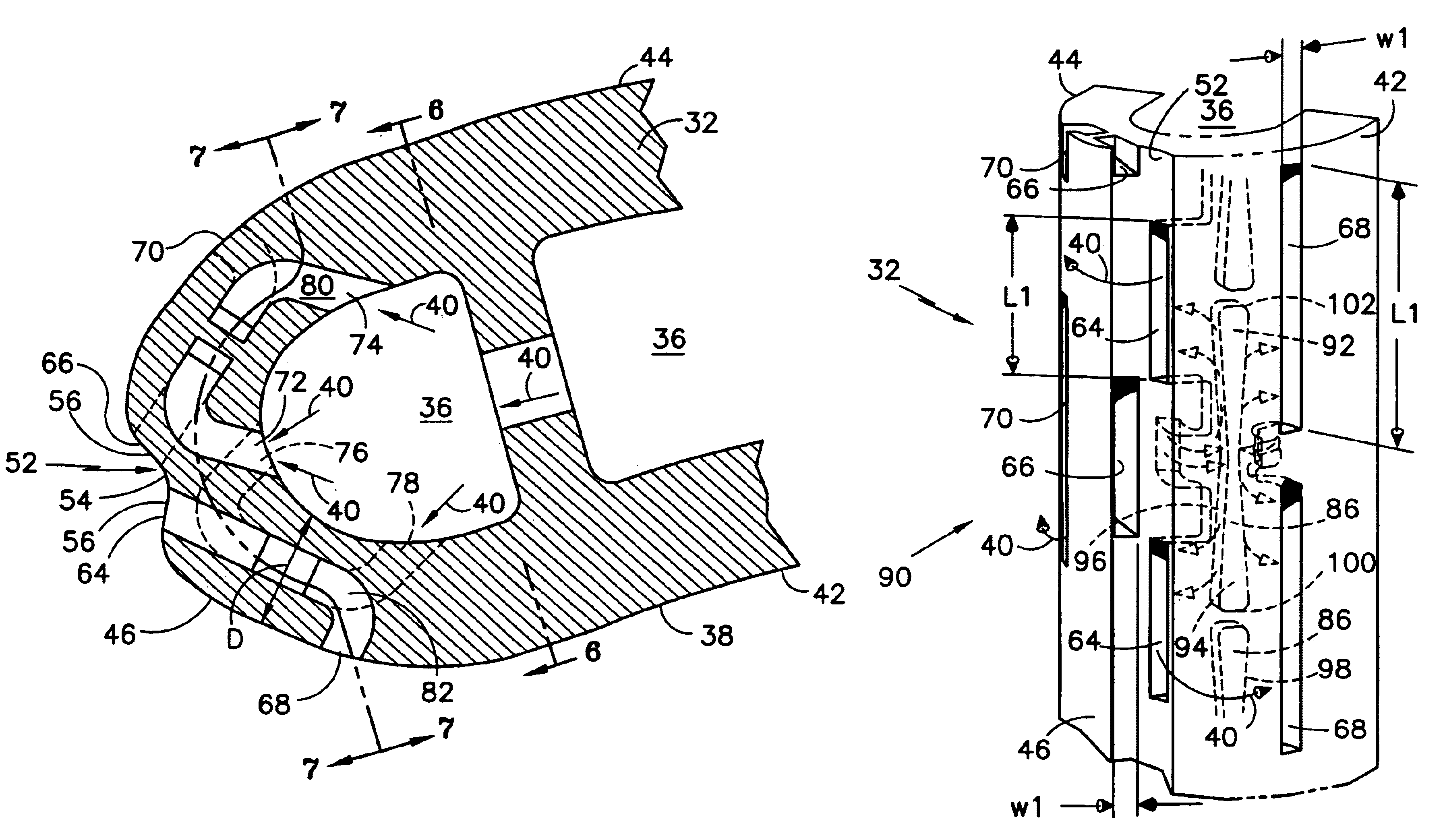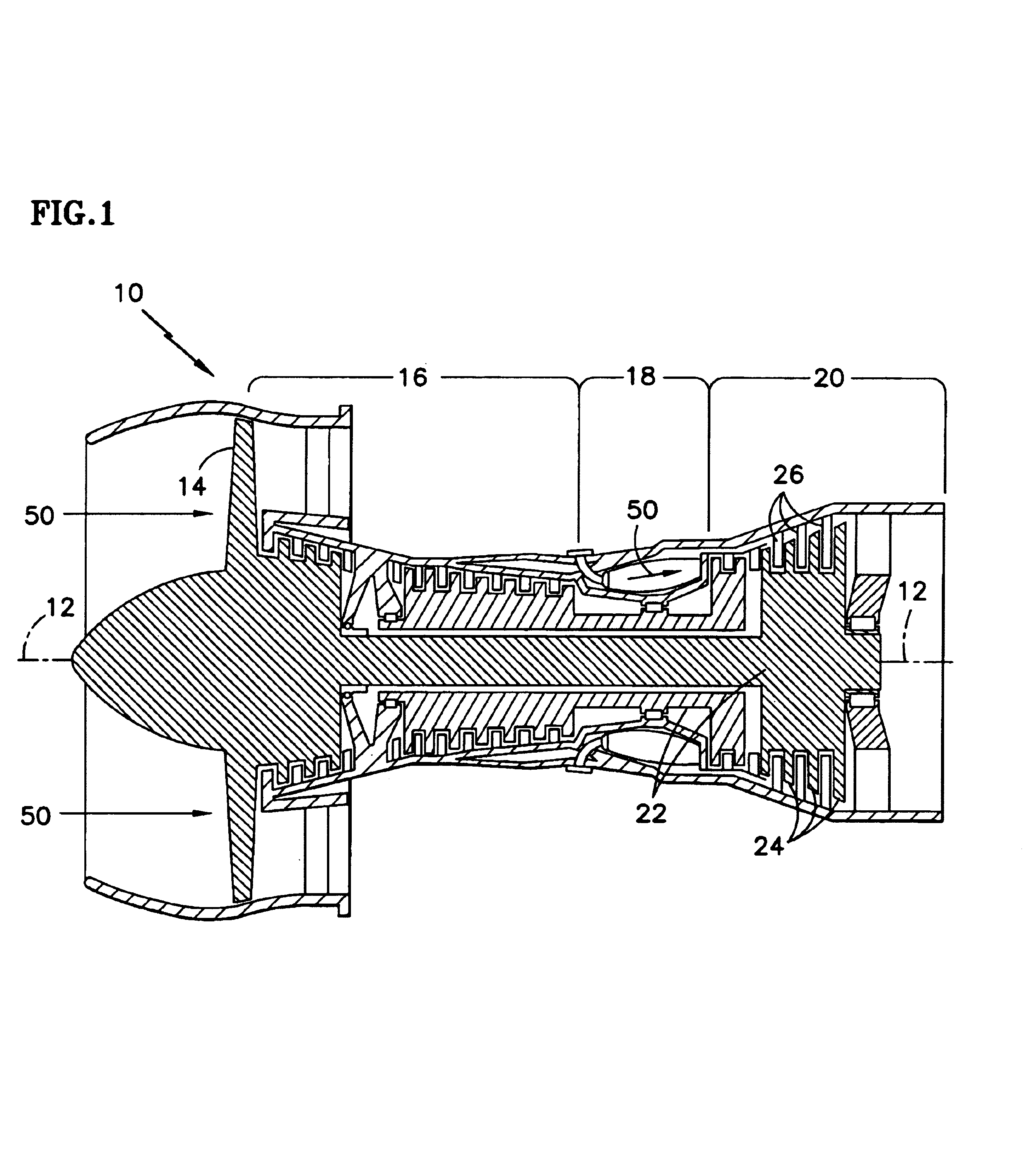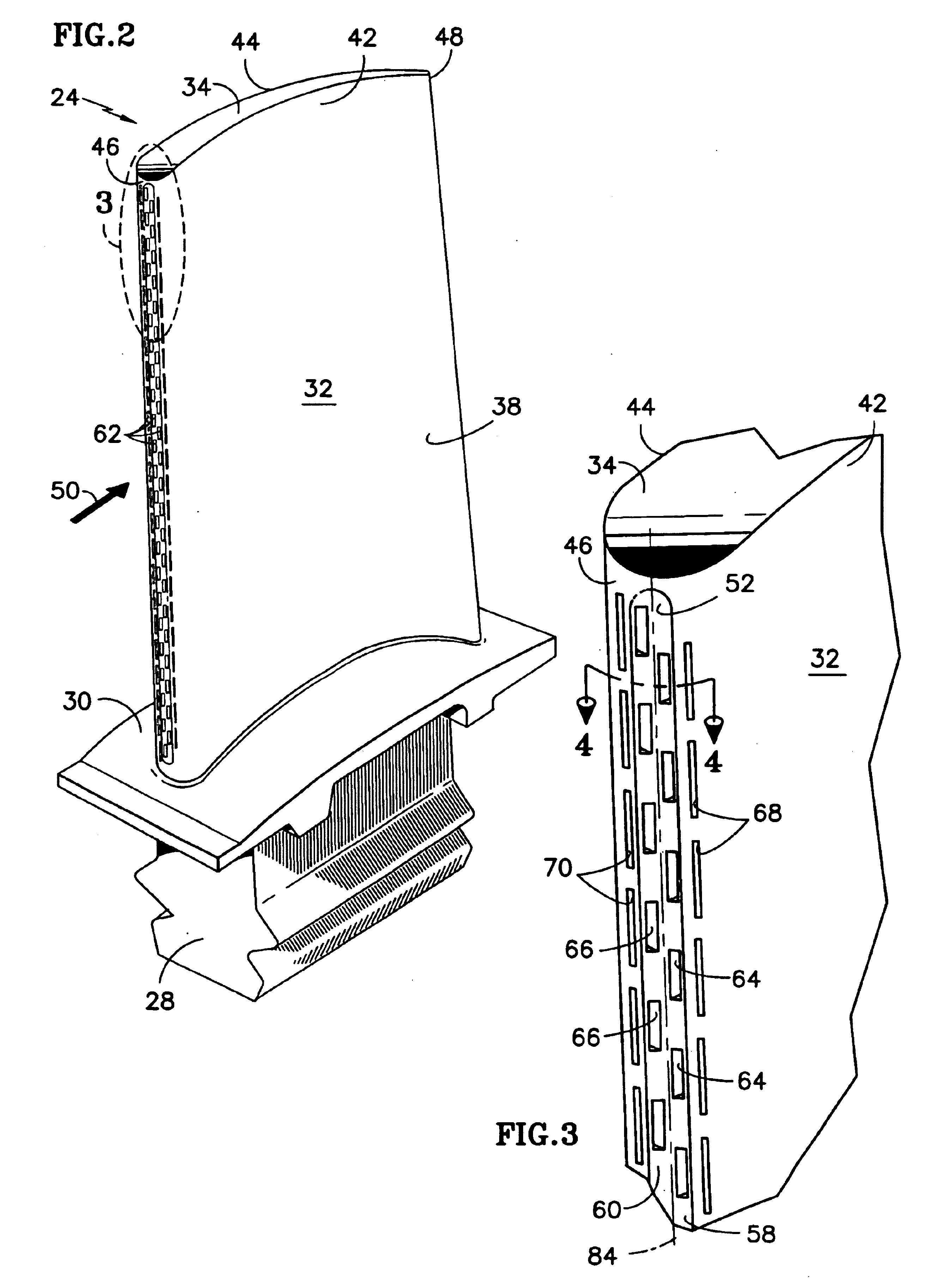Method and apparatus for cooling an airfoil
a technology of airfoil and cooling method, which is applied in the direction of liquid fuel engines, instruments, horology, etc., can solve the problems of affecting the overall efficiency of the engine, and a large percentage of the work imparted to the airbled compressor, etc., and achieves a complex and expensive way of active control of film cooling
- Summary
- Abstract
- Description
- Claims
- Application Information
AI Technical Summary
Benefits of technology
Problems solved by technology
Method used
Image
Examples
Embodiment Construction
[0028]A gas turbine engine 10, such as a gas turbine used for power generation or propulsion, circumferentially disposed about an engine centerline, or axial centerline axis 12 is shown. The engine 10 includes a fan 14, a compressor 16, a combustion section 18 and a turbine 20. As is well known in the art, air compressed in the compressor 16 is mixed with fuel which is burned in the combustion section 18 and expanded in turbine 20. The air compressed in the compressor 16 and the fuel mixture expanded in the turbine 20 can both be referred to as a hot gas stream flow (hot combustion gases, gas flow stream) 50. The turbine 20 includes rotors 22 which, in response to the expansion, rotate driving the compressor 16 and fan 14. The turbine 20 comprises alternating rows of rotary airfoils or blades 24 and vanes 26. The use of the system of FIG. 1 is for illustrative purposes only and is not a limitation of the instant invention which may be employed on gas turbines used for electrical pow...
PUM
 Login to View More
Login to View More Abstract
Description
Claims
Application Information
 Login to View More
Login to View More - R&D
- Intellectual Property
- Life Sciences
- Materials
- Tech Scout
- Unparalleled Data Quality
- Higher Quality Content
- 60% Fewer Hallucinations
Browse by: Latest US Patents, China's latest patents, Technical Efficacy Thesaurus, Application Domain, Technology Topic, Popular Technical Reports.
© 2025 PatSnap. All rights reserved.Legal|Privacy policy|Modern Slavery Act Transparency Statement|Sitemap|About US| Contact US: help@patsnap.com



